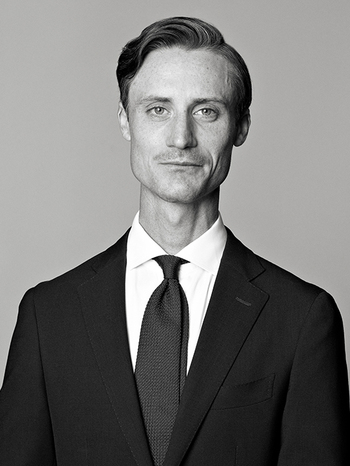Stefan Johansson
"Kerstin, 12 år"
Signed Stefan -26. Watercolour on canvas 30 x 24 cm. Original frame by the artist. Dimensions including the frame 43 x 37 cm.
The following documents are included in this lot:
Loan receipt from Värmlands Museum, dated 1958.
Three handwritten letters by Stefan Johansson, "Miss Kerstin Nyberg!" - dated 11 November 1940, "Esther!" - dated 4 June 1948, and "Dear Esther!" - dated 13 November 1952.
Various newspaper clippings.
Alkuperä - Provenienssi
Directly from the artist to the model's mother, Esther Nyberg. Thence by descent to the current owner.
Näyttelyt
Värmlands Museum, Karlstad, Sweden, "Stefan Johansson. Minnesutställning", 15 February - 5 March 1958, cat. no 24.
Kirjallisuus
Folke Holmér, "En bok om Stefan Johansson", Stockholm, 1958, mentioned p. 42 and illustrated p.75, compare with the pencil drawing "Kerstin (Nyberg) 12 years", executed in 1926, illustrated p.81.
Värmlands Folkblad, "Memorial Over Stefan Johansson", the current painting mentioned in an essay by Mr. Gilbert Svensson dated 26 February 1958.
Muut tiedot
In the radiant portrait "Kerstin, 12 år" (Kerstin, 12 years old) Stefan Johansson has achieved a crystal-clear and taut portrayal whose radiance captivates the viewer in a firm grip. The golden framing gives the portrait an icon-like appearance, enhanced by the bright face emerging against the deep blue background. The blue tones recur in the depiction of hair strands, the soft shadows in the face, and the white blouse collar, which wraps around the model's neck. It is a pure and strict portrait, yet simultaneously an emotional depiction of the young Kerstin.
Sitting as a model for Stefan Johansson was time-consuming, and the artist had a great need to have the model in front of him, preferably at exactly the same time of day and under the same lighting conditions. Stefan Johansson depended on daylight and the time it took for the watercolour paint to dry between sessions. He did not use a camera but worked from a drawn sketch that was transferred onto canvas. Johansson's sparse production can primarily be divided into four thematic areas: interiors and cityscapes in light, portraits, and forest landscapes. Most of the portraits are of his mother, until her death in 1924, but the production also includes a number of portraits of friends and some commissioned works.
Although he received training at Konstfack in his early years, Stefan Johansson considered himself self-taught, an autodidact, which can be connected with the technique he developed early on. During several trips to Italy in 1909-10 and 1913, he studied Renaissance painting, and he tried tempera and watercolour on panel and paper. He then transferred this technique to canvas, which would become his hallmark. By experimenting and diluting the paint with various types of solvents, he achieved his goal when the lightness of the paint allows the texture of the canvas to emerge. Johansson called his new technique "wash painting." On prepared canvases with an "absorbent" base, he paints layer upon layer of tempera and watercolour. Gradually, he washes the canvas with a sponge to achieve his vision and to give the linen threads the shade he sought.
Stefan Hammenbeck writes about Stefan Johansson in the essay "Konstverket som ikon" (The Artwork as Icon) in the Thielska Gallery's catalogue from 2024:
"The method Stefan Johansson chose results in even and smooth colour surfaces, free from the brush strokes found in oil paint, the imprints of the hand's work. It enhances the motif, the central element in the picture. Early on, he shows the characteristic care for the work's framing behind glass, which enhances the colours' lustre and the depth of the image's spatiality. For each work, he also designs and has unique profiled wooden frames made with carefully chosen colouring. This contributes to giving each work a form of icon status."












































